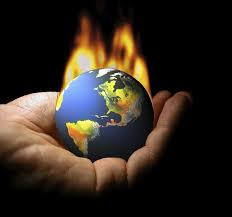 The world invested almost a billion dollars a day in limiting global warming last year, but the total figure – $359 billion – was slightly down on last year, and barely half the $700 billion per year that the World Economic Forum has said is needed to tackle climate change.
The world invested almost a billion dollars a day in limiting global warming last year, but the total figure – $359 billion – was slightly down on last year, and barely half the $700 billion per year that the World Economic Forum has said is needed to tackle climate change.
These are the findings spelled out in the latest Climate Policy Initiative (CPI) report. For the first time, it estimated global North-South cash flows at between $39 and $62 billion.
But the total funding pot fell $5 billion from 2012, and remains just a tiny fraction of the $5 trillion that the International Energy Agency estimates is required by 2020 for clean energy projects alone, if rising temperatures are to be pegged at 2 degrees Celsius.
“Investment to combat and adapt to climate change is happening around the world, but it’s short of where it needs to be and efforts to grow it have not been successful enough,” said Thomas Heller, the executive director of Climate Policy Initiative, the group which compiled the report.
“Leveling the playing field can help unlock significant additional finance,” he added.
The report, Landscape 2013, says that amounts invested in clean energy were dwarfed by the $523 billion a year that the world shells out in fossil fuels subsidies, according to the OECD.
The EU’s energy commissioner, Günther Oettinger was last week accused of suppressing data which shows that the bloc’s €30 billion of subsidies to renewable energy sources is outweighed by a de facto €66 billion of handouts to the fossil fuels sector, and €35 billion to nuclear power.
Some 38% of this year’s climate investment – $135 billion – came from the public sector, according to the CPI study. It was used to leverage the other 62% of funds from project developers ($102 billion), manufacturers and corporations ($66 billion) and households ($33 billion).
“Three-quarters of the climate revenues originated in the same country it was spent in, while the other quarter flowed from the global North to South, and was dominated by public sector funds.”
“Of private flows, the vast proportion was invested in developed countries where policies are often underpinned by similar legal and regulatory frameworks,” the report says, adding that perceptions of risk in the developing world need to be challenged by policy-makers.
All the funds for adapting to climate change – some 65% of the total – came from the rich world’s public exchequer, and were mostly invested as international climate finance.
Although institutional investors, including insurance houses and pension funds, manage $70 trillion in assets, their primary contribution to climate coffers in the developing world – of $0.4 billion – was particularly disappointing.
“Currently, climate finance is mostly a domestic game,” said Barbara Buchner, a senior director at Climate Policy Initiative. “This implies that effective national policy is critical to increasing climate finance globally.
Eur Activ
Leave a Reply
You must be logged in to post a comment.